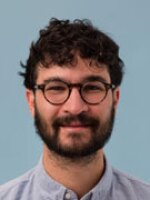A new report commissioned by the American Civil Liberties Union has found that black people in San Diego are being stopped and searched by police at a far higher rate than white people.
The group Campaign Zero, looks at policing data to recommend policies that could help end discriminatory policing. It found that the San Diego Police Department and the San Diego County Sheriff’s Department stopped blacks at a rate of more than two times higher than white people and were more likely to search, arrest, and use force against black people during a stop.
“If you are black in San Diego, you are 219% more likely to be stopped than a white person. You are 59% more likely to have the police use force against you. You are 25% more likely to be searched and 8% more likely to be arrested,” Samuel Singyangwe, the co-founder of Campaign Zero, told KPBS.
Black people only account for around 5.5% of the population in San Diego County, according to the latest census estimate.
The Police Scorecard report was based on data from July 2018 — June 2019.
The data was obtained through a Public Records request by Campaign Zero and was collected by San Diego law enforcement following a 2015 law that requires officers and deputies to gather data about the people they interact with in the field.
RELATED: Committee Sends Initiative Forming Police Oversight Body To Full San Diego City Council
David Trujillo is the advocacy director of the ACLU of San Diego and Imperial counties. He said the findings were not surprising to anyone who has followed interactions between San Diego law enforcement and black and Latino residents. The report confirmed that instead of making arrests and stops in response to 911 calls, police were initiating most of the contacts with these groups.
The report found that within those communities, there were groups that were targeted far more than others, like the homeless.
“To us, the biggest discovery was the way youth, and particularly youth of color were being treated,” Trujillo said. “Especially those with mental health disabilities and those perceived to be LGBTQ community members. It shows there’s a real problem here and we really need to make sure we’re being transparent in how we’re dealing with these issues.”
The report includes a series of recommendations that local law enforcement could use to de-escalate interactions between police and black people, including providing alternatives to arrests for low-level offenses, and implementing more restrictions on when police can use force.
“Scaling up the response of mental health professionals rather than police to situations involving mental health crises. Scaling up the response of folks offering treatment and support to those who are dealing with substance abuse issues, who are experiencing homelessness, rather than arresting them,” Singyangwe said.
In a statement to KPBS, a spokesperson for the San Diego County Sheriff’s Department wrote that they believed all of their “stops, detentions, arrests, and searches to be constitutional and within Sheriff's policy” and that “the numbers in the ACLU report do not appear to be consistent with their data.”
The release said the department will review the report more fully in the coming days.
The San Diego Police Department has not yet responded to a request for comment.








